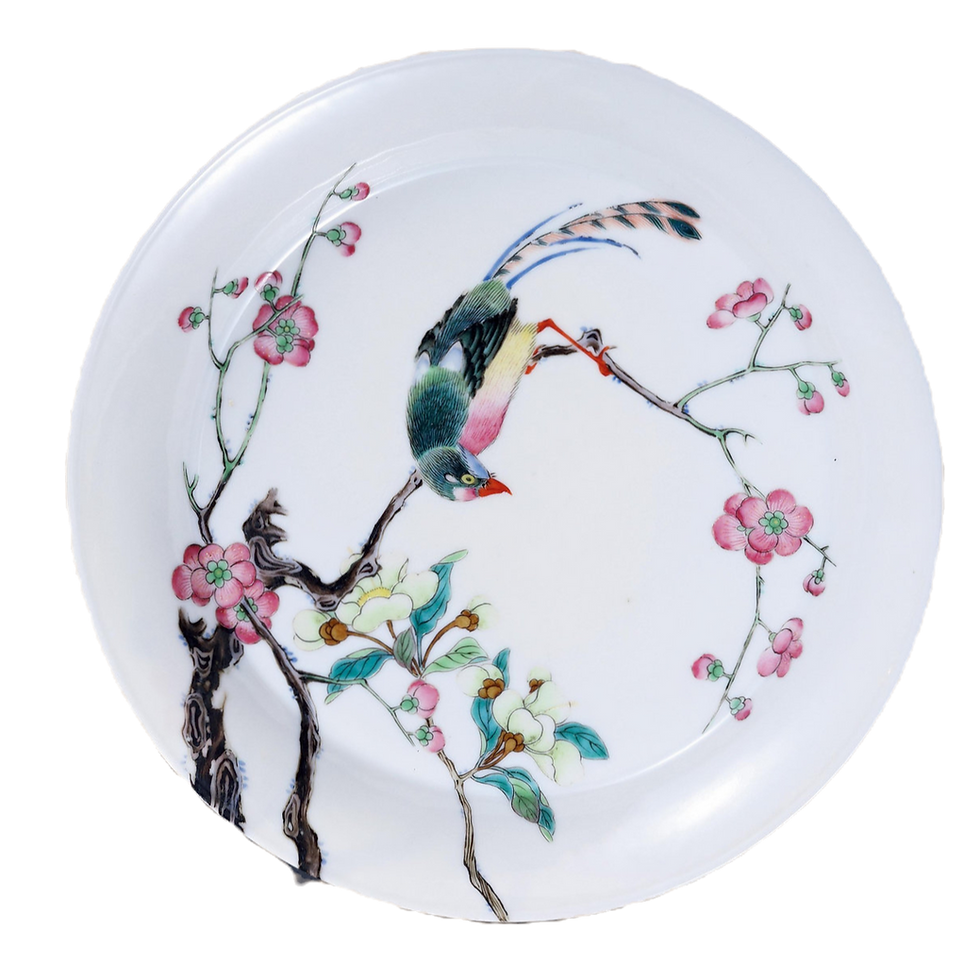The Influence of Art on Emotions in Times of Crisis
- Philippe Smolarski
- Mar 16
- 4 min read
This time, I'm stepping away from my usual role at Moon-Rabbit-Art. No valuations today, no expertise reports—just a personal reflection on what truly gives art its value: its ability to make us feel, understand and transcend the darkest moments of our shared humanity. I was reminded of this last month while traveling through Madrid. Because beyond all the market prices and estimates we handle daily, it's this emotional power that makes a work an invaluable testimony of our collective history.
When confronted with a work of art that directly addresses human suffering, one feels something profoundly striking. I still remember my visit to see Picasso's "Guernica" at the Reina Sofia Museum—that immense canvas that physically overwhelmed me, those shattered bodies and tormented faces that provoked in me a visceral reaction that no history book had ever managed to evoke.
This is what genuine art does in times of upheaval—it doesn't merely document events; it conveys emotional truths that would otherwise remain unspeakable.
When Painting Is More Eloquent Than Words
"Guernica" is the most powerful artistic response to tragedy I have ever seen. Painted as a reaction to the bombing of this Basque town in 1937 during the Spanish Civil War, Picasso didn't simply represent destruction—he expressed how violence fractures our perception of reality. The shattered perspective, the screaming horse, the mother clutching her lifeless child—all in black, white, and gray—create an emotional tension that disarms all intellectual resistance.
What I appreciate about this work is not limited to its political relevance, but rather its ability to speak to us across decades. Standing before it, I experience a shared feeling of sadness and indignation that transcends the particular historical context.
From Adversity to Creation
The 20th century witnessed artworks born from unprecedented trauma. Otto Dix, who fought with the German army during World War I, painted canvases like "The War" triptych that don't avert their gaze from horror. His meticulous depiction of corpses rotting in trenches and scorched landscapes carries the weight of lived reality. I am fascinated by how even nightmares are transformed into something that allows us to process collective trauma through artwork.
Similarly, his distorted, screaming bodies translate the existential anguish of post-war Europe. His "Three Studies for Figures at the Base of a Crucifixion" from 1944 comes as close as possible to a visual representation of acute anxiety—visceral, harrowing, disturbing. And yet, there is something comforting about seeing inner anguish expressed with such rawness. It becomes a less solitary horror.
Discovering Beauty in the Ruins
Not all artworks directly confront darkness. Sometimes, the best response to turmoil is to create beauty as an act of resistance. German painter Anselm Kiefer emerged from the shadow of his country's Nazi past to produce immense paintings that confront memory and history. Works like "Margarethe" transform devastation into contemplation, with burned straw and charred earth tones that evoke both horror and transcendence.
I've also discovered that proximity to Kiefer's work produces a singular alchemy—the weight of historical trauma is not lightened but rather metamorphosed. There is a certain comfort in seeing even the most unbearable realities assimilated into artwork. Similarly, I think of Ernst Ludwig Kirchner's raw, colored urban landscapes that depict the alienation and dynamism of city life on the eve of World War I. Faced with political harassment and mental illness that subsequently took their toll, his work became more expressionistic—translating inner and outer turmoil through intensified colors and structures. His case makes me reflect on how art doesn't simply represent our inner life—it can also construct and contain it.
Human Suffering as Universal Language
Few artists better evoke the power of transforming personal pain into universal expression than Frida Kahlo. She presents her self-portraits of physical and emotional suffering with uncompromising honesty. "The Two Fridas" (1939), painted after her breakup with Diego Rivera, reveals her duality—traditional and modern, European and Mexican, wounded and intact.
What I admire most about Kahlo is not so much her willingness to depict her pain, but rather how her most intimate expressions become a universal language that can apply to our own sufferings. This is a profound generosity—offering us words to express what might remain unspeakable, even to ourselves.
A Mysterious Necessity
In our contemporary era marked by perpetual crises, I wonder what art brings us today. What are the images that help us make sense of our collective sorrows, terrors, and aspirations? I have no simple answers, but I know that when the accumulation of global events becomes too heavy to bear, I turn to art—not as an escape, but as a passage.
Art never solves our problems or erases our suffering. It does something else. It bears witness. It tells us: "This matters. This feeling matters. You are not alone in experiencing it." And sometimes, this recognition is what we're seeking—not solutions, but presence. As René Magritte so aptly expressed: "Art evokes the mystery without which the world would not exist." We may need it even more in times of crisis—because when reason no longer offers answers, mystery remains. And within it lies our shared humanity, our capacity to feel deeply and search for meaning, even in the midst of the worst trials.




Comments